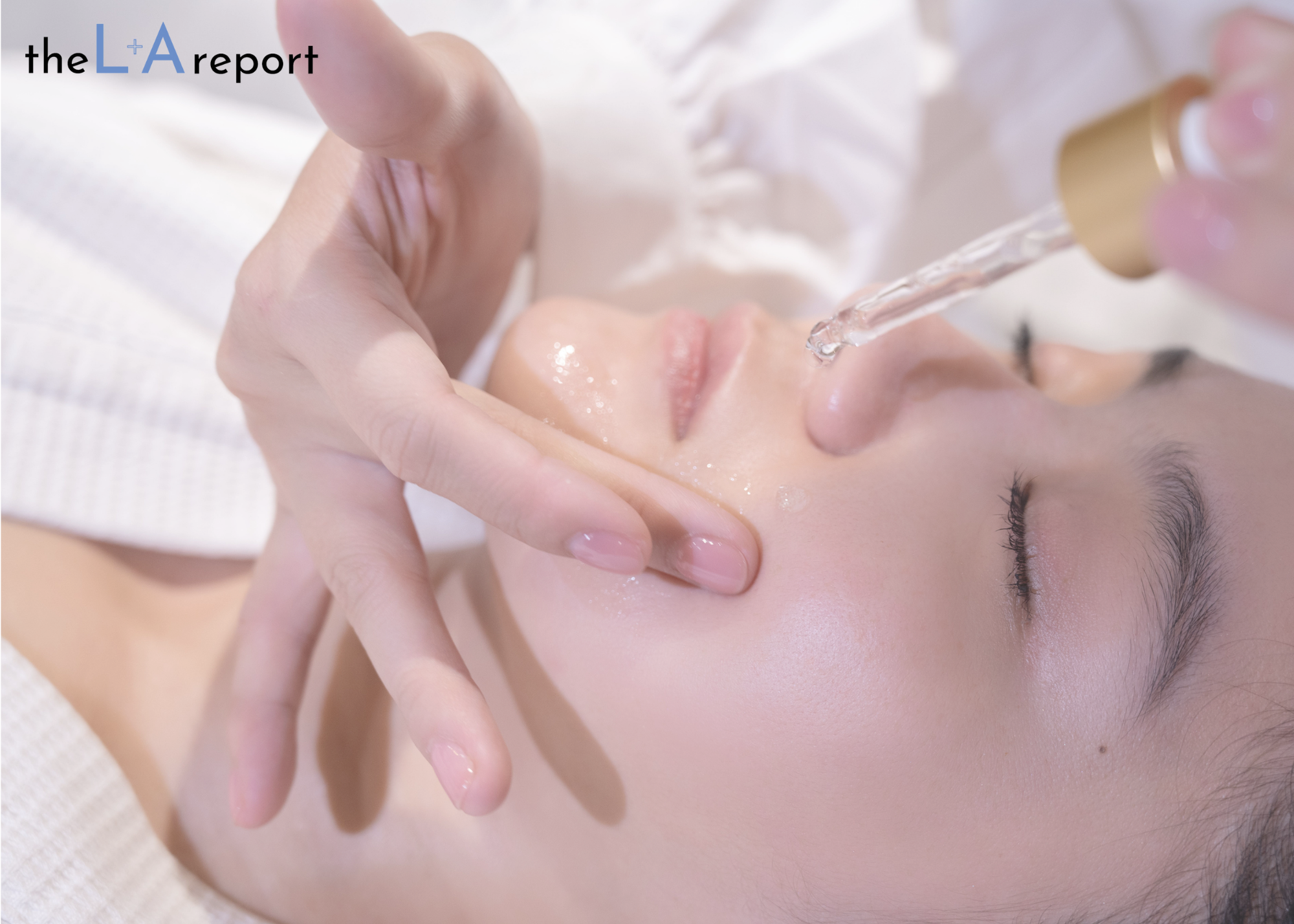Your clients can defy the winter chill with a list of winter skin’s hydration heroes.
As winter’s chill sets in, maintaining hydrated and healthy skin becomes a priority. The cold air, coupled with indoor heating, can strip moisture from the skin, leaving it dry and vulnerable. To counteract this, it’s essential to incorporate hydration heroes into your skincare routine while also considering dietary choices.

January 2025 L+A Report
7 Medical + Spa Skincare Winter Hydration Tips
We’ve got 7 hydration suggestions for your medical or spa skincare business. For 2025 medical and spa skincare professionals can offer home care and in clinic treatments that can boost the winter hydration levels of their clients’ skin!
Hydration Through Nutrition
Let’s focus on internal care first: I apologize in advance for this dietary restriction which we should aim to implement year-round and not just during winter: our beloved Caffeine.
It is best to avoid or significantly cut back on it. To my regret, Caffeine has a diuretic effect which removes water from our bodies but moreover, it depletes Magnesium, hindering the reabsorption of sodium and water in the kidney’s renal tubules. These tubules are responsible for returning vital fluids and nutrients to our bloodstream.
Magnesium is well-known for its importance in bone, muscle and nerve function. It also plays a role in regulating blood pressure and blood sugar levels, and is crucial for balancing electrolytes, which are key to hydration.
Our eye area can indicate kidney function; puffy eyes, swollen eyelids and bluish eye circles can suggest kidney issues and a mineral deficiency. Simply increasing water intake may not resolve this! Instead, supplementing with Magnesium Lactate specifically can make a significant difference.
On a related note, a Magnesium deficiency combined with dehydration can lead to digestive issues and bile ‘backflow’, which may feel like a sharp pain in the stomach when consuming oily foods. This can also contribute to a swollen, bloated stomach. While it might help with bowel movements, it still lacks the removal of bile.
Increasing your intake of fruits and vegetables with a high water content can significantly boost your hydration levels. Foods like watermelon, pineapple, cucumber, lettuce, zucchini, and spinach not only hydrate but also enrich your body with essential nutrients. These foods contribute to glowing skin from within and support the immune system.
Smoothies: A Convenient Solution
If you find it difficult to consume fruits and vegetables during winter or find it hard to eat between clients, consider blending them into smoothies. Combining these ingredients with coconut milk, chia seeds or flax meal creates a nutritious and easy-to-consume option.
Hydration Through Skincare
Transepidermal water loss is heightened in winter due to the low humidity and drying effects of central heating. In addition, we tend to take hot showers which strip our skin’s protective lipids and weaken the skin’s barrier even more. This can cause itching, prickling, burning, eczema, and impaired stem cell function. To combat these issues, it is essential to support the skin with natural barrier lipids and anti-inflammatory components. Phytosterols like beta-sitosterol or fatty acids like gamma-linolenic acid, which have anti-inflammatory properties, can help here. However, in order to tackle the cause – the weakened skin barrier – the skin must be supplied with natural barrier lipid components that are as compatible as possible. In particular, these are essential fatty acids that can be incorporated into the lamellar lipid system or those that can be used as a substrate for the production of important components such as ceramides.
5 Skin Supporting Hydration Ingredients
1 Phytosterols
Plant-based compounds similar to cholesterol, found in unsaponifiables like sunflower oil. They provide anti-inflammatory benefits and can substitute missing cholesterol in the skin barrier.

Jennifer Crable
Jennifer Crable is a globally recognized skincare educator with a unique blend of scientific expertise and practical experience. After a successful career in skincare ingredient R&D, she transitioned to become a licensed esthetician in Germany, Florida, and West Virginia. As Head of Sales and Education for EpiStep, Grandel, and PHYRIS, she shares her knowledge with dedication and passion to empower spa professionals.
2 Balloon Vine Extract
Contains phytosterols and serves as a cortisone-free anti-inflammatory alternative to prescription products.
3 Gamma-Linolenic Acid
An essential omega-6 fatty acid present in oils like primrose, borage, and echium. Echium Oil is distracted from the so-called Viper’s – Buglosses plant containing a high amount Gamma-Linoleic acid.
4 Vitamin E and Squalene
Renowned for their roles in skin regeneration and maintenance.
5 Oat Kernel Oil
Oat seed oil is a natural antioxidant and is rich in ceramides. It has a nourishing effect on the skin, and also supports the barrier functions through the ceramides. Oat Kernel Oil moisturizers and serums create an instant ‘glass’ skin effect!
Penetration Enhancers
Ingredients like extracts from cogon grass and cactus are excellent for adding water to the skin due to their natural water-storing abilities. However, penetration enhancers are needed to ensure these ingredients reach the deeper layers of the skin.
Facial Services Devices
Galvanic, ultrasound, electroporation, micro-or-nanochanneling, and micropinning, etc.
Homecare Ingredients
Oil-based ingredients like glycols (e.g. Propylene Glycol) and alcohols (e.g.ethanol). The most effective enhancers are dermal carrier systems, such as liposomes.
Liposomes in Skincare
Penetration enhancers for daily use in homecare products are oil-based ingredients like glycols (e.g. Propylene Glycol), alcohols like ethanol. The best penetration enhancers are dermal carrier systems like liposomes which are utilized to encapsulate active ingredients.
These round vesicles are made of Phospholipids that have a hydrophilic head (water-based) and two lipophilic legs (oil-based).
Water-based ingredients are attached to the hydrophilic heads which build the core of the liposomes and the outer surface. The liposomes easily move through the lamellar kit (intercellular spaces of the stratum corneum) while carrying the encapsulated ingredient. Once it is through the stratum corneum, the enzymes Phospholipase take the vesicle walls apart which releases the active ingredient.
Some skincare companies mention the use of liposomes on the product packaging and training material but you can also identify it by checking the INCI list for Lecithin and Phosphatidylcholine.
By providing products that incorporate these beneficial ingredients, you can assist your customers in achieving healthier, more comfortable skin throughout the winter months. With the right approach to hydration and skin care, winter can be a season of glowing, vibrant skin rather than dryness and discomfort.
